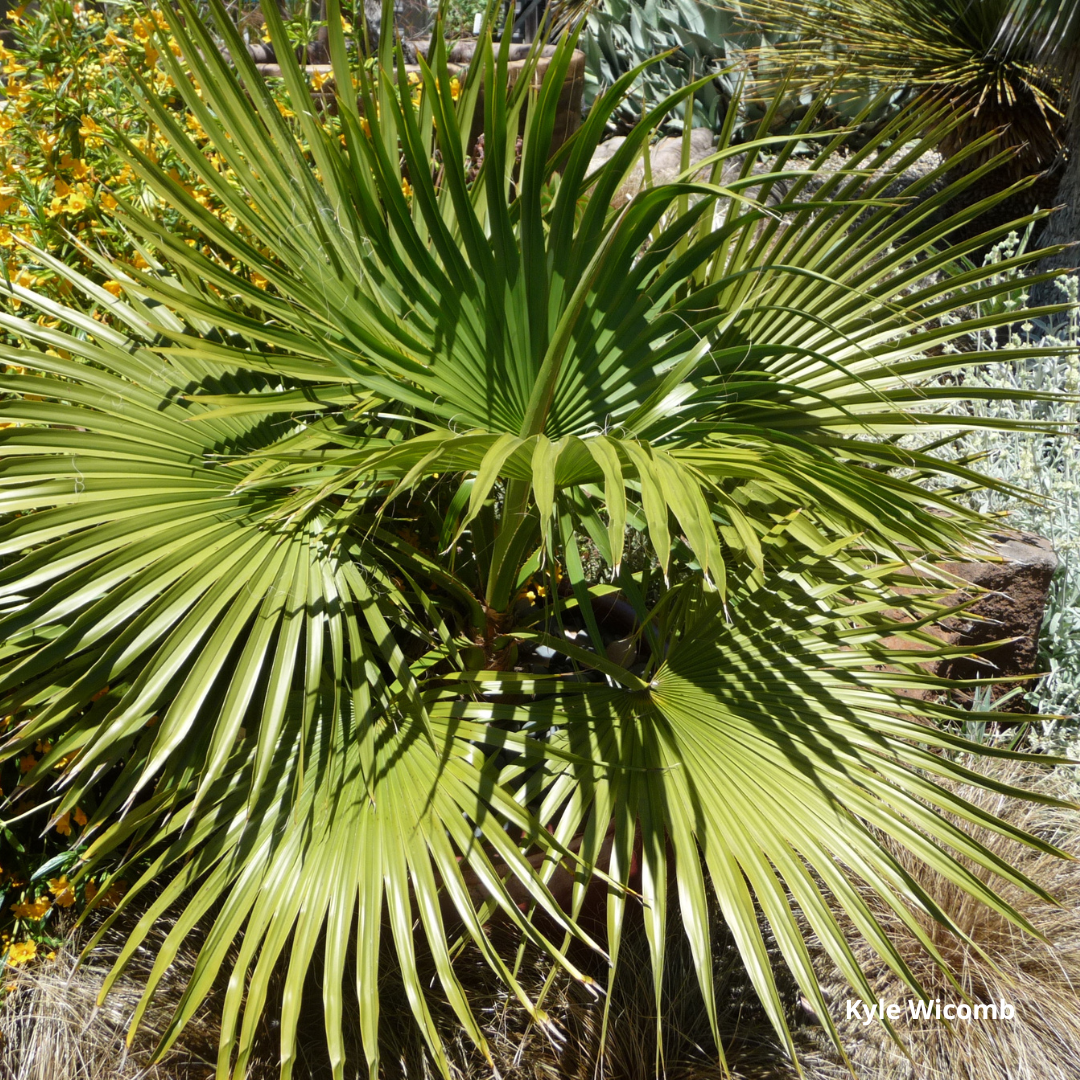VIRIAR
Brahea Dulcis - Palmier de roche - 10 graines
Brahea Dulcis - Palmier de roche - 10 graines
Impossible de charger la disponibilité du service de retrait
Description de la plante
Nom : Brahea dulcis
Noms communs : Palmier de roche, Brahea doux, Palmier sombrero
Le Brahea dulcis , communément appelé palmier de roche, Brahea doux ou palmier sombrero, est un palmier de petite à moyenne taille originaire du Mexique et d'Amérique centrale. Il est reconnu pour sa polyvalence et sa capacité à s'épanouir aussi bien en plein soleil qu'à mi-ombre. Ce palmier est reconnu pour ses jolies feuilles en éventail, généralement vertes ou bleu-vert, qui lui confèrent un attrait visuel saisissant dans les jardins et les aménagements paysagers.
Le palmier de roche atteint généralement une hauteur de 4 à 7 mètres (13 à 23 pieds), ce qui le rend idéal pour les petits jardins ou comme plante solitaire. Son tronc est fin et peut devenir lisse ou légèrement rugueux avec l'âge. Ses feuilles sont palmées, d'environ 1 à 1,5 mètre (3 à 5 pieds) de diamètre, aux bords finement dentés. Le Brahea dulcis produit de petites fleurs blanc crème sur de longues inflorescences arquées, suivies de petits fruits ronds et foncés, comestibles et sucrés, d'où son nom de « Brahea doux ».
Culture de Brahea dulcis
Conditions:
-
Lumière : Le Brahea dulcis s'adapte à diverses conditions de luminosité, du plein soleil à la mi-ombre. Bien qu'il puisse tolérer le plein soleil, un peu d'ombre l'après-midi dans les climats plus chauds peut aider à prévenir les brûlures des feuilles et à conserver leur couleur éclatante.
-
Température : Ce palmier est adapté aux zones de rusticité USDA 8b à 11. Il est relativement résistant au froid par rapport aux autres palmiers et peut tolérer des températures allant jusqu'à -6 °C (21 °F) pendant de courtes périodes. Il prospère dans les climats chauds et secs, mais peut également supporter des conditions plus fraîches et tempérées.
-
Sol : Le Brahea dulcis préfère les sols bien drainés, comme les sols sableux ou limoneux, mais il s'adapte à une grande variété de sols, y compris les sols légèrement alcalins. Le pH idéal pour ce palmier se situe entre 6,0 et 7,5. Un bon drainage est essentiel pour prévenir la pourriture des racines.
-
Eau : Une fois établi, le palmier de roche est moyennement tolérant à la sécheresse. Il préfère un arrosage régulier, surtout pendant ses premières années de croissance, pour favoriser le développement d'un système racinaire solide. Laissez le sol sécher légèrement entre les arrosages. Évitez les excès d'eau pour éviter l'engorgement.
Plantation et entretien :
-
Plantation : Plantez le Brahea dulcis au printemps ou au début de l’automne, lorsque les températures sont douces. Choisissez un emplacement bien drainé et bien éclairé. Creusez un trou deux fois plus large et de même profondeur que la motte. Placez le palmier dans le trou, remblayer avec de la terre et arroser abondamment pour tasser le sol et éliminer les poches d’air.
-
Fertilisation : Nourrissez le Brahea dulcis avec un engrais équilibré à libération lente, conçu pour les palmiers, au printemps et en été. Cela favorisera une croissance saine et un feuillage éclatant. Vous pouvez également ajouter du compost organique ou du fumier bien décomposé pour enrichir le sol.
-
Taille : La taille est minimale pour le Brahea dulcis . Supprimez les frondes mortes ou abîmées pour maintenir une apparence soignée et favoriser une croissance saine. Évitez de supprimer les frondes vertes et saines, car cela pourrait stresser la plante.
Propagation
-
Graines : Le Brahea dulcis se multiplie généralement par graines. Récoltez les fruits mûrs du palmier, retirez les graines et nettoyez-les soigneusement. Trempez les graines dans de l'eau tiède pendant 24 à 48 heures pour ramollir l'enveloppe extérieure et améliorer la germination. Semez les graines dans un terreau bien drainé et placez-les dans un endroit chaud et ombragé. Maintenez le sol constamment humide, mais pas gorgé d'eau. La germination peut prendre de plusieurs semaines à plusieurs mois, selon les conditions.
-
Transplantation : Les jeunes palmiers peuvent être transplantés, mais il faut veiller à minimiser les perturbations racinaires. Pour de meilleurs résultats, transplantez-les dès les premiers stades de croissance.











